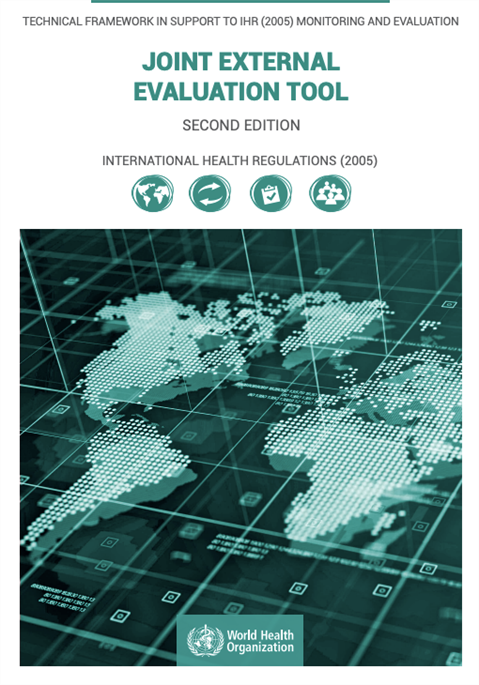Joint external evaluation tool: International Health Regulations (2005) - second edition
IHR (2005) Monitoring and Evaluation framework

Overview
The first edition of the WHO Joint External Evaluation (JEE) tool was made available in February 2016, and by the end of December 2017 67 countries had requested a JEE to WHO and completed the voluntary evaluation using this tool.
In late 2016, the JEE Secretariat began the process of systematically collecting suggestions and comments on improving the first edition of the JEE tool from WHO Regional Offices, technical area leads in WHO headquarters and external experts who had participated in one or more JEE missions and Member States who had conducted a JEE or were preparing for a JEE. The suggested improvements and comments were collated into an annotated version of the JEE tool and in April 2017, WHO convened a global meeting with over 90 global technical experts and all WHO ROs to discuss the suggested improvements and recommend changes.
These changes and suggested improvements are reflected in the second edition of the JEE tool.
Joint External Evaluation tool (JEE tool) - first edition
The main changes within the second edition of the JEE tool is the inclusion of two financing indicators, the merging of two indicators under legislation into a single one and the renaming of three technical areas (Real time surveillance is now Surveillance, Workforce development is now Human resources and Preparedness is now Emergency preparedness). The tool now has 49 indicators (increase of one indicator from the previous 48), within the 19 technical areas. The second edition of the tool helps clarify issues in the interpretation of various indicators, attributes and questionnaires, with more footnotes. It also clarifies the discrepancy found in national capacities between the human and animal sectors and recommends animal and human health scores for the indicators are given; the lower score of the two is to be considered, rather than the average.
The technical areas of IHR coordination, communication and advocacy, Biosafety and biosecurity, Immunization, National laboratory system, Reporting, Emergency preparedness, Medical countermeasures and personnel deployment, Linking public health and security authorities, Risk communication, Points of entry, Chemical events and Radiation emergencies, have minor changes for the purpose of clarity and interpretation.
